A sample text widget
Etiam pulvinar consectetur dolor sed malesuada. Ut convallis
euismod dolor nec pretium. Nunc ut tristique massa.
Nam sodales mi vitae dolor ullamcorper et vulputate enim accumsan.
Morbi orci magna, tincidunt vitae molestie nec, molestie at mi. Nulla nulla lorem,
suscipit in posuere in, interdum non magna.
|
By Ken, on November 30th, 2008  We are at the point in the global financial crisis where we should ask what is to be done. A number of commentators are already posting their theses for restructuring the international financial system, so it is high time we do so here. What can really focus the discussion is a conversation I had over the Thanksgiving holiday. The person I had the conversation with did not have a background in business or finance, so it was useful to present the discussion in a way someone on Main Street (not Wall Street) could understand it. We are at the point in the global financial crisis where we should ask what is to be done. A number of commentators are already posting their theses for restructuring the international financial system, so it is high time we do so here. What can really focus the discussion is a conversation I had over the Thanksgiving holiday. The person I had the conversation with did not have a background in business or finance, so it was useful to present the discussion in a way someone on Main Street (not Wall Street) could understand it.
Not Enough Pigs With Lipstick to Recycle
The first question my guest asked was “how did all of this happen?” I gave the typical Wall Street/Washington dodge of, “well, it is long and complicated and would take hours to explain to YOU!” My guest, a brilliant attorney of many decades, though mathematically challenged, said, “but all of these right-wingers and Fox News say that it was all caused by sub-prime and Jimmy Carter and the CRA.” Good lawyers know how to bait a witness and I was no exception at this point, so I had to respond, so here is how I answered my non-Wall Street guest:
I. Right-wing talking points on sub-prime are lies
Sub-prime lending had little, if not nothing, to do with the crisis at hand. If there is any trouble in housing and real estate as a whole it exists in the prime residential mortgage and commercial sectors, both of which are far larger than was sub-prime. What is really telling are the numbers.
Sub-prime isn’t the cause, it’s really just small-prime
According to the Chicago Fed, the U.S. 2006 residential mortgage market was $10 trillion in size (all mortgages), of which sub-prime was worth $1.5 trillion. Now, if sub-prime was the culprit couldn’t the government just bail out every single sub-prime mortgage and we’d be done with it? After all, we more than have the money (TARP, AIG, Citi, Fannie/Freddie bailouts total well over $1.5 trillion). The market would rally, Dow 20,000, President McCain, Bush would be God and Fox News would be Gospel.
For that matter, add in $400 billion of Alt-A mortgages from 2006 (mortgages that sit between sub-prime and prime), now we are at 20% of the $10 trillion market for residential mortgages. Seems like sub-prime is really just small-time and a form of right-wing disguised discrimination. More D words to add to our D-Watch, sadly.
II. The problem is the foundation
All of global finance rests on credit as a mechanism for clearing transactions. By its very nature, all credit must be secured by good and valuable collateral.
What happened is that credit was created out of thin air, it was not secured against any collateral. To put this simplistically, it means that I lend you $5 now, you owe me $10 tomorrow, but we both know you have no means or assets to pay even $1 back.
Bad foundations make for falling houses
The best illustration of the problem of uncollateralized no due diligence lending is the credit default swap (CDS) market. A CDS is a contract (for a fee) between a holder of a bond and an “insurer” that in case of an event of default (say a bond default) the insurer will take collateral from the holder and repay the holder for their losses.
Here is where the foundation gets shaky. There is no foundation! Parties to a CDS contract don’t actually have to hold the reference instrument. In other words, we can agree on this insurance contract without any assurance that either one of us holds the thing we are insuring against. Also, unlike regulated insurers (your car, health or life insurance), there are usually no capital requirements, so when the non-asset holding insured goes to collect, he may find out that the insurer is insolvent!
III. How big is the CDS problem?
Few outside of high finance ever heard of a CDS before 2008 and my Thanksgiving guest mentioned that none of the main stream media (MSM) ever report on this. Here is the reason why, sub-prime is easy to understand and easy to manipulate emotions. Not so with something like CDS. But the CDS market is a $35 trillion market, far larger than all of U.S. housing combined.
So, what caused the crisis?
- Un-collateralized lending laid the groundwork for potential mass credit defaults.
- Mass credit defaults occurred due to various market disruptions (energy prices, real wage declines, global instability, profit taking, . . . )
- Fear of further defaults on un-collateralized credit has caused a seizure of the credit system and disruption of economic activity. This creates solvency problems (not liquidity problems).
- Removal of credit and economic activity contracts money supply and lowers valuations leading to deflation.
That’s the crisis in a nutshell. Up next, what to do about it.
And that’s how it goes . . .
By Ken, on November 22nd, 2008 Update: Please see the latest charts as of December 1, 2008 in the post titles Dow Jones 1900-2008 Charts (More Updates). The update includes both logarithmic and arithmetic charts of the Dow to date.
This is the latest update of the chart I’ve put together that shows the Dow Jones Industrial Average (DJIA) from 1900-2008. The chart is very simple, without the fancy graphics, but shows the rise in prices from the 1990s to today (as well as the unwind we are going through now). This chart starts January 3, 1900 and is updated through the market close November 21, 2008.
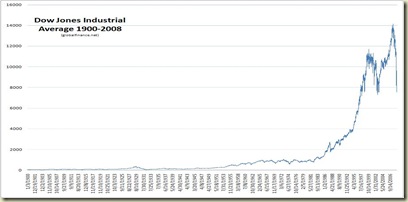
The post Charts To Show That Markets Don’t Always Go Up has the original chart, plus some snapshot charts from times along the 1900-2008 continuum to illustrate how market cycles work.
Things to Think About for Monday
- The market closed above 8,000. This is a good sign. Perhaps we have bottomed, perhaps not, but the close at this level appears to be because of two pieces of good news: Obama’s pick of Tim Geithner for Treasury and that the Democrats (or the Chinese) will not let the bit 3 automakers nor Citibank sink to oblivion.
- Is 8,000 really a technical bottom where we go up from here or a short-term stop while we continue a debt-driven unwind on our way lower?
- The Dow is not the best indicator of market performance since most investors don’t buy the Dow itself (the Dow does not account for dividends, for instance). What would be a better indicator of market performance?
What to really think about over the weekend is enjoying the weather, fun, family, friends, anything but global finance. We’re back to work Monday morning (and for a short week in the U.S.).
. . . And that’s how it goes
By Ken, on November 21st, 2008  In our first installment of Misunderstanding Oil and Alternative Energy we described the card game that oil futures traders can play to constrict supply and boost futures prices. As the futures market controls the spot market oil traders game theory plays make spot settlement more expensive and, therefore, drive up prices for all oil-based products. In our first installment of Misunderstanding Oil and Alternative Energy we described the card game that oil futures traders can play to constrict supply and boost futures prices. As the futures market controls the spot market oil traders game theory plays make spot settlement more expensive and, therefore, drive up prices for all oil-based products.
Of course we also pointed out the down-side to this as increased volatility, the spikes up go higher as supply tightens (peak oil), but the downsides can be steep as demand disappears. The card game example is fully described by Brandenburger and Nalebuff in Coopetition.
Know When to Hold ‘Em
To prove the game theory thesis of oil trading, big oil is planning a return to the card table, so to speak. This article appeared in Forbes today(h/t Naked Capitalism):
Oil companies plan to store millions of barrels of crude at sea as they wait for demand to pick up and prices to rise.
So far oil companies have booked ships capable of holding up to 10 million barrels, brokers have said, more than the daily output of top exporter Saudi Arabia.
My guess is they are readying for a price bottom (exactly what price is anyone’s guess). When that hits, get ready for some card ripping to get oil prices back up to good time levels.
. . . And that’s how it goes
By Ken, on November 21st, 2008  Market watchers have long considered MSM overuse of finance buzzwords as contrarian indicators. For instance, if every single media outlet in mid-2000 was crowing Dow 36,000 and how dot-com would change everything, savvy investors knew it was time to sell. We kicked off the latest buzzword watch here at Global Finance Net with our D-Watch yesterday and not even 24 hours later we have a decent list of “D” words buzzing around the Internet and the MSM, but is it a contrarian indicator this time? Market watchers have long considered MSM overuse of finance buzzwords as contrarian indicators. For instance, if every single media outlet in mid-2000 was crowing Dow 36,000 and how dot-com would change everything, savvy investors knew it was time to sell. We kicked off the latest buzzword watch here at Global Finance Net with our D-Watch yesterday and not even 24 hours later we have a decent list of “D” words buzzing around the Internet and the MSM, but is it a contrarian indicator this time?
Today’s News, Brought to You by the Letter D
Two of today’s most prominent financial and economic luminaries were in full D-Watch mode today. Nouriel Roubini started with a post at RGE Monitor titled “The Deadly Dirty D-Words”. Not to be outdone, Nobel Prize winning economist (and contemporary of Fed Chair Ben Bernanke) Paul Krugman met Roubini D for D in the New York Times with “The Lame Duck Economy”.
I. Like Two Ds in a Pod
Krugman and Roubini’s works fit together perfectly. Krugman articulates a warning I alluded to at the end of my post on the failure of the Treasury’s bailout plan (see, Paulson: Our TARP Has the Blues). The warning is that there is precious little time to act on the global financial crisis and policy dithering until the Obama Administration can take over on January 20 may prove disastrous.
Roubini follows Krugman perfectly with a doable policy outline that can be acted upon immediately. Like him or not Roubini, a.k.a. “Dr. Doom”, has an impeccable track record calling this crisis and his advice should be taken very seriously.
Getting back to D-Watch, the trends both authors noted in their articles were:
- Deflation (Krugman and Roubini)
- Debt (Roubini)
- Defaults (Roubini)
- Detroit (Krugman)
II. Deflation is the Demon we Despise
Our last post discussed the Roman Empire’s Crisis of the Third Century and the post-crisis events that eventually led to the fall of Rome two centuries later. The Crisis was a classic inflationary-deflationary trap where money supply was at first inflated, then a deflationary spiral crashed everything. Our current situation is not so different:
- Alexander Severus devalued Roman currency to pay for his wars, as Alan Greenspan let M3 explode to inflate the housing bubble.
- Asset and commodity prices in the Roman Empire went up in nominal terms as did housing and commodities in the U.S. (though in real terms, think of these assets relative to wages or Euros, real asset values were beginning to deflate).
- Once all saved value had been leveraged in to debt asset prices ceased inflating and started to deflate in nominal terms (not just real).
III. D-Watch Plays Heavy Metal
We can see, if you will pardon my use of the term, depression signs in the spot trading for two base metals, nickel and copper. It goes without saying that Ni and Cu are used in just about every product we buy, so a sharp turn in their markets is not a good economic sign.
Nickle Prices Fall, LME Stocks Back Up
The two charts below from Kitco Base Metals show the drop in demand pressures on the nickel market.
The price chart illustrates the sharp fall in price from the 2005-2007 bubble, while the LME stocks chart shows more room for a further price drop due to build-up in supply.
Copper Prices Fall, Stocks Better Off
The copper market is a bit healthier than Nickel, though we should remember that copper was in such short supply it was not uncommon to hear stories of copper cable theft. I haven’t heard any of those stories recently.
IV. What to D-do about D-flation in D-cember?
Remember that D-Watch is still about looking for a Depression, not deflation, which would be just one element of a Depression. As I have stressed and as Krugman and Roubini seem to say, policymakers have precious little time. Here is why action is needed now and why deflation needs to be taken very, very seriously:
- Almost all policy remedies fail in case of deflation. Monetary policy fails, only fiscal spending has any hope of curing deflation. There is no trade policy, private sector remedy, invention or movement that can stop deflation, except massive spending or all out war.
- All of the buy gold, treasuries, silver, and so on as a safe haven is meaningless in deflation. There are no financial safe havens in a deflation.
- Note from point 1 as to how deflations were cured in the past. In Rome’s case it was division of the Empire and war, in Russia’s case it was spending from the oil price boom during the early 2000s, in the case of the Great Depression it was a combination of the New Deal and WWII.
I must stress that the key point here is to heed Roubini and Krugman’s advice, policymakers cannot afford to wait until January 20. For individuals, please read my Terms of Use as nothing here is meant as a specific recommendation. You should always consult with your financial/legal advisor and consider your own situation.
(N.B.: I have purposely kept the number of links in this post low as Global Finance Net has been having problems updating in Blogger and Technorati search engines. Apparently, blogs with high numbers of links are flagged as spam blogs, so let’s see if lowering our links helps at all. Grrrr.)
. . . And that’s how it goes
By Ken, on November 20th, 2008  A few readers asked me to expand on the tips I offered in the last post on Stories from a Recent Depression. I will do that a little further down in this post. Before we get there, there are two “D-Watch” issues I’d like to bring up, one from long ago, one more recent. A few readers asked me to expand on the tips I offered in the last post on Stories from a Recent Depression. I will do that a little further down in this post. Before we get there, there are two “D-Watch” issues I’d like to bring up, one from long ago, one more recent.
Meet Severus, Defender Against the Dark Arts
Actually the Severus most important to modern finance is not Severus Snape from J.K. Rowling’s extensive Harry Potter series, but Alexander Severus, Roman Emperor from 222-235 A.D., whose death touched off the Crisis of the Third Century and near collapse of the Roman Empire. If only only Alexander Severus been able to conjure a Patronus Charm!
 Let’s sum up, Severus was born in 208 A.D. When he became Emperor in 222 he inherited a growing and prosperous Empire. A military defeat, graft (bribing the Germanic invaders), economic over-expansion and low morale led to a plot by Severus’ troops to murder him in 235. Let’s sum up, Severus was born in 208 A.D. When he became Emperor in 222 he inherited a growing and prosperous Empire. A military defeat, graft (bribing the Germanic invaders), economic over-expansion and low morale led to a plot by Severus’ troops to murder him in 235.
After Severus death, the Roman Empire suffered economically from hyperinflation. The solutions of the Crisis of the Third Century were counter productive. The Empire saw increased taxation, abandonment of property (to avoid taxation), crumbling infrastructure and collapsing trade. It was not until the ascension of the Emperor Diocletian in 284 that the Crisis finally abated.
I. Ruina Ab Imperium (Collapse of Empire)
Scholars have written encyclopedia volumes on the causes and effects of the Crisis of the Third Century, but a short list relevant to readers of Global Finance Net is this:
- Overexpansion of military commitments (many of which were not decisively winnable).
- Overexpansion of debt (trade credits and early Roman mortgages).
- Failure to maintain infrastructure necessary for commerce.
- Inefficient use of resources (use conquered assets to support Imperial lifestyles while producing very little).
- Severe persecution of religious minorities.
So what happened during the Crisis and even in the time between the end of the Crisis and the eventual fall of the Roman Empire in 467?
- Hyperinflation
- Devaluation of the currency
- Collapse of trade
- Ruin of infrastructure
- Price controls
- Government instability
- Rise of competing social and religious ideology (remember that Christianity was a radical religious idea back then).
II. More Recent Signs from “D-Watch”
I’ve decided to start a depression watch or “D-Watch” given the recent main stream media (MSM) penchant for scare stories about the Great Depression in the U.S. First, here is a short list of MSM articles that make our D-Watch list for today:
- CNN Money: The Big Three Depression Risk.
- The Australian: Depression Risk Hits Shares.
- Laurel Leader Call: The Children of Depression 2.0.
Aside from the macabre thrill of keeping tally of our new global D-Watch pastime, my opinion remains that all comparisons to 1929 (or corrected to 1931 or 1933) are worthless. First, few economists and financial advisors know what they are talking about and I guarantee that none of them can predict the future.
That said, it is better to use reason and induction to at least come up with theories or scenarios of what might happen. We should focus on simple things where we can see what is happening.
III. D-Watch Central Chart
Most of the U.S. market downturn can be summed up in one word – debt. The fact is that the U.S. is faced with a problem similar to that which led to the Crisis of the Third Century and that is our debts far exceed our ability to produce our way out of them. Forget repayment, given an infinite time horizon, all debts can be repaid. The problem is that we don’t have infinite time and we don’t want our production deflated by the burden of crushing debt.
One chart making the rounds on the Internet is the U.S. Total Credit Market Debt to U.S. GDP from Hayman Advisors. See for yourself (from Clusterstock):

The chart illustrates one very simple possibility for the markets in the U.S. – we are heading back to levels not seen since the mid-1980s because of the need for a reduction back to a 150% debt burden. Obviously, there are a lot of details behind this simplistic conclusion. Who holds the debt? How long will it take to unwind? Who declares bankruptcy? And so on . . .
We can put the debt chart with our Dow history charts from the earlier Charts to Show That Markets Don’t Always Go UP! post. The Great Depression debt bubble lasted between roughly 1928 and 1941. Our Dow Jones chart for the period shows that the average settled around 175 after falling from the 1929 high of 381, a 54% loss. Likewise, we see that the debt ratio reduction was from 260% to around 135% (though it vacillated back to the 160% level, probably due to WWII). Put the two together, a 50% loss in the market from peak matched a 50% deleveraging relative to GDP.
IV. D-Watch Doesn’t Make Sense Without GDP Contraction, Debt Increase or Both
Now let’s take a look at our 1968-2008 Dow chart. If we assume that deleveraging should go to the 150% debt/GDP point (roughly back where we were in 1985), then the equivalent chart point for the Dow is the 1985 range of 1,500. This would imply a drop of 80% from today’s level of about 7,500 (to speak nothing of last Fall’s 14,000 highs). The deleveraging reduction from 360% to 150% is a 58% reduction, so the math doesn’t quite take us back to the mid-1980s, so we should probably assume one of the following:
- The deleveraging will take us down another 60% (though markets always overshoot), so the 1992 level of 3,000 is more likely.
- The ratio is worse than we think, say 400%, or we will have to have to deleverage more, say to 75% in today’s numbers.
This is probably the most realistic driver of an 80% change, and the driver is what wakes me up in the middle of the night, GDP contraction. Depending on the degree of denominator compression (that is the top number – debt – stays fixed or grows, the bottom number shrinks), we could get to a 400% debt/GDP ratio. Let’s assume a 10% GDP contraction drops 2009 GDP from $14.3 trillion to $12.9 trillion, let’s also assume debt doesn’t increase. Our new ratio would be 395% and reducing to 150% is a larger reduction.
Could this happen? We’ve laid out the assumptions above and believing that both GDP will contract while debt increases is probably reasonable. Believing that this will negatively impact the market is probably also reasonable. The question is one of when and how much and this is where fortunes will be made and lost.
V. Guide to D-Watch
I promised some tips for what to do and here they are. First is to think and analyze. One article I cited above noted the end of financial experts. I don’t think advice or expertise is going away, I’m certainly not anti-intellectual. I do think that people will become more discerning after both the dot-com bust and this crisis, we will all need to know the difference between real advice and “the stopped watch is right at least two times a day.”
Second is a group of things I experienced in Russia during the 1990s. As I said in the last Stories from a Recent Depression, I think more recent economic crises hold better lessons than 1929.
- Family, friend and community networks are critical. In Russia, currencies were cancelled with only a weekend notice, controlled prices were freed in the same chaotic fashion, banks and ATMs stopped working literally overnight. If you can’t use cash or credit cards (and stop telling me about gold, silver, conspiracy, blah, …) you have to rely on connections, goodwill and so on.
- Seek out local products. At the end on the 1990s much of Russia’s goods were imports. At the beginning of 2000, most goods were domestically produced, foreign goods were unaffordable to the average Russian. The same will happen in the U.S. and E.U. eventually. Do an experiment, next time at the store, see if you can shop and exclusively within your continent (North America or Europe). See what has to be imported and what can locally replace it.
- Drop the silly fads and happy talk to focus on the situation at hand. I’ll do a post on this later, but the whole “it’s cool to be frugal” is, let me say, stupid. It is not cool, not when people starve, not when the sick can’t get healthcare, not when families are bankrupted, not when resources are pillaged, not when companies are destroyed and not while the looters of our economy go unaccounted. No it’s not cool at all and I think we will all be better off when there is some real wealth, even if we have to redistribute it to be fair.
- Build your personal value, think about what will be needed if the economy gets really bad. Will your skills as a real estate agent or mortgage broker be highly valuable? Probably not. What about skilled plumbers, computer repair, sewing clothes, medical work, growing and preparing foods? Someone might need this.
- Finally, get your health and life in order. If things go bad, you will need this above all else, those who survive are those most adaptable to change. And above all, remember that the “market” is a fiction, it does not feel, think or relate. What matters most is your friends, your family and your love.
The Central Bank of Jamaica seems to have the right attitude (from The Big Picture):
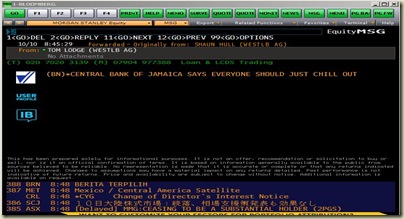
. . . And that’s how it goes
By Ken, on November 18th, 2008  A few newspapers recently dared to describe the U.S. recession of 2008 with the d-word, depression. While the problems across the globe have yet to approach the seriousness of a depression, I thought it might be valuable to share my observations of having lived through a stock market crash and subsequent depression not too long ago. A few newspapers recently dared to describe the U.S. recession of 2008 with the d-word, depression. While the problems across the globe have yet to approach the seriousness of a depression, I thought it might be valuable to share my observations of having lived through a stock market crash and subsequent depression not too long ago.
A Brotherhood of Babushki
But how could someone who isn’t at least 85 years old know about a stock market crash or a depression? Easy, one happened in Russia and many other emerging markets between 1997 and 2001. While there aren’t millions of us “survivors” back working in Western markets, there are probably enough of us to swap stories with veterans of the Great Depression of the 1930s.
I. Déjà Vu All Over Again
In the fall of 1997 the Russian Trading System (RTS) Index of top liquid Russian shares traded in Russia hit a peak value 571.66 in US Dollar terms. By early October 1998 the index would make a low at 38.53.
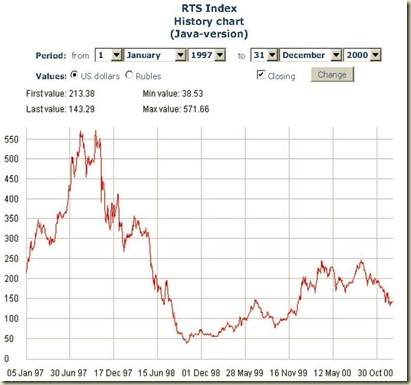
The market declined 93% from peak to trough in one year for a number of reasons, many of which U.S. and other global investors will find similar to the situation now:
- Russian banks and industries of the late 1990s were value subtractors. That is, the value of labor plus resource inputs was higher than the value of outputs. Today’s similarity: housing, auto makers, airlines.
- The government debt was not reasonably payable, deficits were unsustainable and the state sector was unable to finance massive social obligations. Today’s similarity: federal debt, federal deficit, nervous treasury markets, strained State budgets.
- The government burned billions of IMF bailout money in July and August of 1998 in an attempt to defend the rouble exchange rate. The attempt was unsuccessful leading to a banking collapse due to the sovereign debt default (counterparty risk) and rouble devaluation. Today’s similarity: TARP funds going for M&A deals not asset repurchases, counterparty risk reflected in LIBOR due to CDOs/solvency issues, Iceland, Pakistan, Ukraine.
- Long Term Capital Management (LTCM), a leveraged fund exposed to concentrated risk potentially caused a large market disruption. Today’s similarity: Bear Stearns, Lehman, AIG.
II. Stories from the “Depression of 1998”
What the U.S. and other countries face is not necessarily what Russia faced in 1998 for a number of reasons. Chief among them is that the U.S. can apply massive resources to tackle the problem and the U.S. has more and better infrastructure than Russia did at the time. While historical accounts from the 1930s are important, it may be worthwhile to look at how events that have happened in the recent past could occur in a real depression.
When Credit Cards Go Haywire . . .
Whether credit or debit, much of modern society depends on plastic transactions. In 1998, after the August debt default and collapse of most banks, Russian debit/credit cards were frozen (note that few “credit” cards existed at the time). To highlight the problems this caused, here is the story of one of my friends who was nearly separated from his family due to the crisis.
K worked as a banker in Moscow, K’s family lived and worked in Africa. K reserved a plane ticket to go to his family at the end of August 1998. He had the money in his account to pay for the ticket, but when the crisis occurred, all of these funds were frozen, as was his card. The airline would not accept payment in cash, only debit/credit cards. K was lucky in that since most Moscow ATMs were closed, I needed cash and he needed his plane ticket. I purchased the ticket for him with my working U.S. credit card, he paid me cash in roubles. K got to visit his family, I made my rent payment.
. . . Prices Aren’t What They Seem
A few days after the default and devaluation, I took a client of our bank to a local hotel for dinner. The dinner was relatively inexpensive on first appearance. Most menu prices still quoted dollar-equivalent prices, though by law all charges were in roubles at a specified exchange rate. The dinner was around 60 U.S. Dollars. However, credit card transactions don’t actually post for a few days, and as the rouble/dollar rate recovered slightly during that time (at least the spread between the hotel and the credit card did), the dinner charge in the end wound up being around 75.
III. Lessons Learned
There are a few things that we can learn from the Russian experience in 1998. The top prognostic indicators are:
- Debt is sustainable only as long as someone else is willing to pay for it. In other words, that which can’t go on, won’t.
- Half-measures only make things worse.
- Predictions of economic strength (“the fundamentals of our economy are sound” or “the crisis is contained”) are lies.
- Similarly, predictions of economic doom are speculative at best (“sell everything”). In my career I have heard officials of Russia, Ecuador and Argentina all say they would never EVER default on their debt. They did. Similarly, many predicted Russia’s doom in 1998. If you bought $10,000 of the RTS on January 1, 1999 and sold today (November 18, 2008) you would have $90,797! Had you sold this time last year, you would have $356,729. No buy/sell recommendations here, but a lesson that markets always prove you wrong.
If the worst does happen, there are a number of things we can do. Thinking about the positive makes all of the scary 1930s images the media throws at us a little better.
- Family and community are critical during hard times. My story of K and his plane ticket underscore just how important it is to have friends. In our world of commuter bubbles, suburbs and nuclear families we have largely lost this skill. Many of the survival stories from the 1930s and from what I saw in Russia were people relying on family, friends, neighbors and social organizations for shelter, food, advice, transport and so on.
- Learn skills. Few people in our modern world know how to sew, cook, grow plants, perform CPR, make stitches, ride a bicycle, swim, care for farm animals, pluck chickens, pull a tooth, fix a toilet, hang a picture, make a table, repair their computer, wash clothes by hand, and so on. Most people in the 1930s knew how to do these things as did (and do now) most people in Russia. In a depression, medical care, food, shelter and other comforts are not always reliable so one has to learn these skills for oneself.
- Get healthy. Economic hard times means a lot of walking, lifting, fixing things and even stress. We handle this better if we are fit and trim not lazy and fat.
IV. Not the End
One of our traders in Moscow during 1998 summarized the plunging market this way, “well, there were just more sellers than buyers today.” Remember that the market can make you rich, it can also make you poor. One thing it cannot do is make you happy, I think our trader was trying to tell us that. Another thing to remember is that on other days there will be more buyers than sellers.
. . . And that’s how it goes
By Ken, on November 12th, 2008 U.S. Treasury Secretary Hank “The Tank” Paulson essentially admitted that the Treasury’s Troubled Asset Repurchase Plan (TARP) hasn’t worked and will now focus on consumer lending. Residents of post-Katrina New Orleans living with “FEMA blue” tarps on their homes will now note the irony.
Paulson Declares TARP Bailout Over
Drop the Partisanship, We’re In It Together
Now is not the time to play a Washington blame game, there will be a time to sort things out when the crisis has passed. Both parties in the House and Senate voted for this under extraordinary pressure, they were taken. Here is the roll call from each iteration of the TARP (the original failed bill and the later one that passed):
1. H.R. 674 – The failed bill
2. H.R. 681 – The passed (current) TARP
New Thinking and Better Ideas Needed
With all due respect, the current administration has botched the financial crisis. In short order we have had misdirected bailout funds, inaccurate statements from public officials about the state of the economy, misfeasance toward critical private sector institutions (Bear and Lehman) and now a mass waste of funds while critical time has lapsed.
The sitting administration needs to put together a better financial stabilization plan or else get out of the way. We will write up our ideas in an upcoming post, but in brief this plan should include:
- A full audit, triage and recapitalization of the entire US banking sector. Include mutual cancellation cross-cancellation of CDS/CDO securities for insolvent or government run banks to reduce the CDS/CDO market liability overhang.
- A rule change from no/haphazard regulation to smart regulation, including imposition of a financial transactions tax (FTT), a variation of a Tobin Tax to cover the FDIC, SEC and other Government agencies at user, not taxpayer expense.
- Solidify tax plans now including which of the Bush tax cuts to make permanent and which will rise.
- Restrictions on leverage in financial markets, replacement of leverage with government loan and investment guarantees.
- Enforcement of uniform accounting standards including mark to market.
- Leave Iraq and Afghanistan. Invest in domestic infrastructure, transit, IT and energy projects.
- Top up funding at the World Bank and IMF for international development, make US Government compliments to those agencies more efficient.
My belief is that the Obama people are working on this, but there is the constraint that he is not President yet. My fear is that we don’t have until January 20.
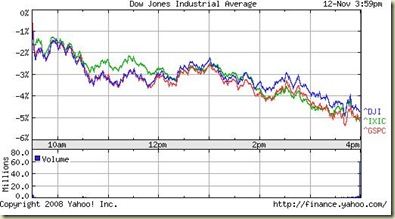
. . . And that’s how it goes
Page 5 of 6« First«...23456»
|
|
 We are at the point in the global financial crisis where we should ask what is to be done. A number of commentators are already posting their theses for restructuring the international financial system, so it is high time we do so here. What can really focus the discussion is a conversation I had over the Thanksgiving holiday. The person I had the conversation with did not have a background in business or finance, so it was useful to present the discussion in a way someone on Main Street (not Wall Street) could understand it.
We are at the point in the global financial crisis where we should ask what is to be done. A number of commentators are already posting their theses for restructuring the international financial system, so it is high time we do so here. What can really focus the discussion is a conversation I had over the Thanksgiving holiday. The person I had the conversation with did not have a background in business or finance, so it was useful to present the discussion in a way someone on Main Street (not Wall Street) could understand it.




 Market watchers have long considered MSM overuse of finance buzzwords as contrarian indicators. For instance, if every single media outlet in mid-2000 was crowing Dow 36,000 and how dot-com would change everything, savvy investors knew it was time to sell. We kicked off the latest buzzword watch here at Global Finance Net with our D-Watch yesterday and not even 24 hours later we have a decent list of “D” words buzzing around the Internet and the MSM, but is it a contrarian indicator this time?
Market watchers have long considered MSM overuse of finance buzzwords as contrarian indicators. For instance, if every single media outlet in mid-2000 was crowing Dow 36,000 and how dot-com would change everything, savvy investors knew it was time to sell. We kicked off the latest buzzword watch here at Global Finance Net with our D-Watch yesterday and not even 24 hours later we have a decent list of “D” words buzzing around the Internet and the MSM, but is it a contrarian indicator this time?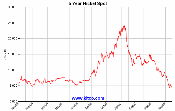
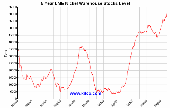
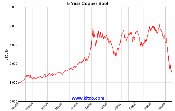
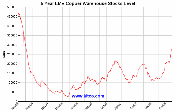
 A few readers asked me to expand on the tips I offered in the last post on
A few readers asked me to expand on the tips I offered in the last post on  Let’s sum up,
Let’s sum up, 

 A few newspapers recently
A few newspapers recently 
